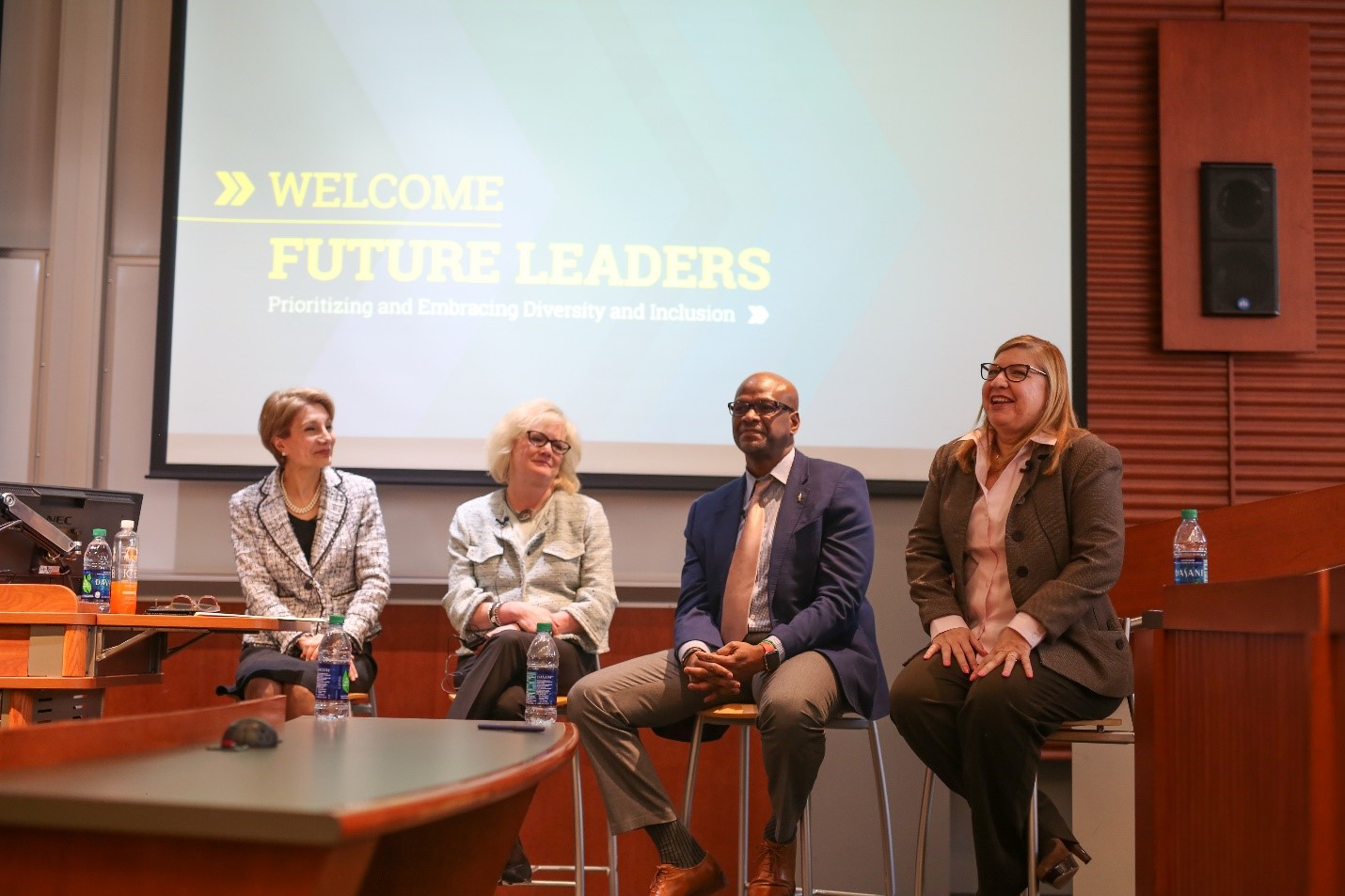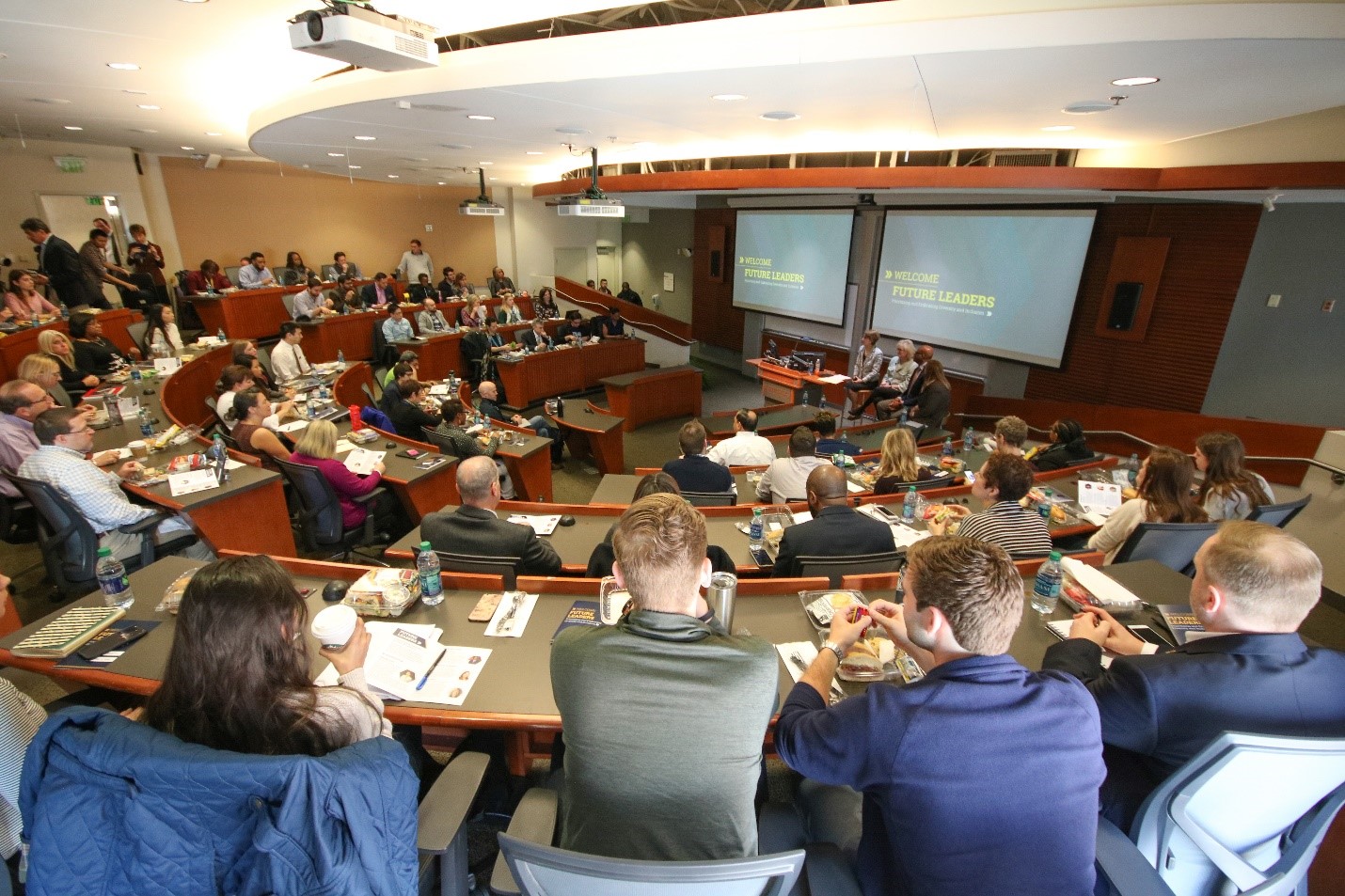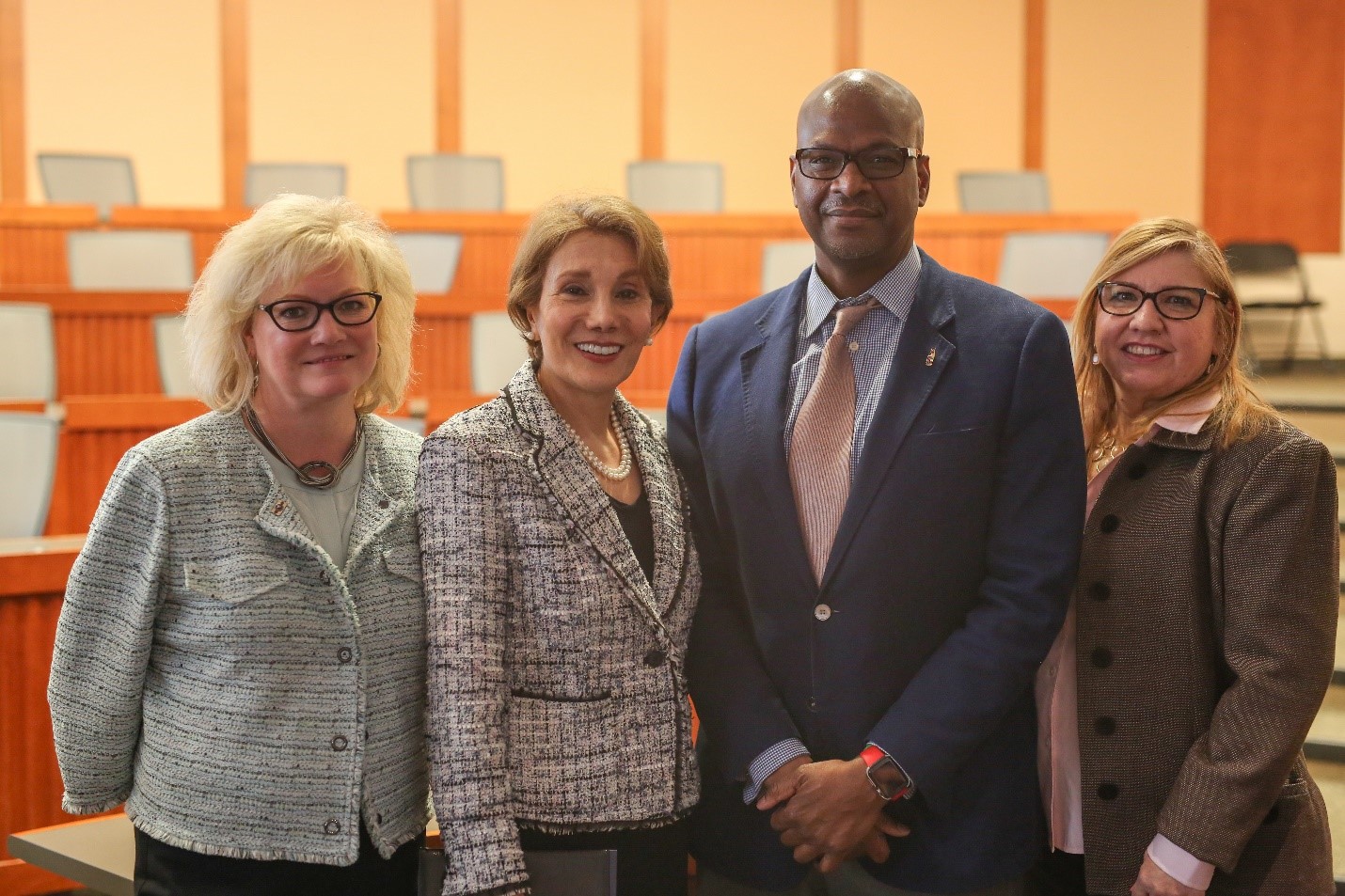In a rapidly diversifying world, implementing diversity and inclusion practices in the workplace is not only the right thing to—it is a business imperative. To this end, Scheller College of Business recently hosted executives from The Coca Cola Company, The Home Depot, and Southern Company, so they could share how their organizations both embody and embrace the power of differences. On April 5th, the Future Leaders Panel on Prioritizing and Embracing Diversity and Inclusion featured the following guests:
- Andrew Davis: Global Chief Diversity & Inclusion Officer, The Coca Cola Company
- Dr. Beatriz M. Rodriguez: Chief Diversity Office, The Home Depot
- Nancy Sykes: Executive Vice President and Chief Human Resources Officer, Southern Company

Dean Maryam Alavi moderated the panel, kicking the conversation off by stating “in order for businesses to innovate, they must embody diversity and inclusion at all levels.” The discussion focused on how the panelists promote diversity and inclusion within their organizations to increase performance and drive innovation. With a packed room of attendees, the panelists candidly shared their successes and lessons-learned to help aspiring leaders make an impact in their own environments.
Davis acknowledged, “Working on diversity and inclusion is something that’s easy to say, but not as easy to do.” He explained how The Coca-Cola Company’s goal is to mirror the markets they serve with an organization just as inclusive and diverse as their brand offerings. Rodriguez echoed his sentiment, noting that for The Home Depot, “The more we can represent our diverse customers in leadership, the better we can serve them.”
Diversity has traditionally been the primary focus for companies, but the practice of inclusion is quickly gaining equal attention. The panelists all discussed how these elements interplay to create a thriving and productive work environment. Sykes explained that at Southern Company, “Diversity is the what; inclusion is the how. Inclusion unleashes the power of the different experiences that we all bring together.” While diversity is often obvious in visual differences within an organization, inclusion is the effort made to embrace all those differences effectively. As Rodriguez often tells employees, “You make us diverse. How you treat others is what makes us inclusive.”
Davis delved into one element of diversity often overlooked: cognitive diversity. The Coca-Cola Company is currently working to harness the cognitive diversity of their employees to impact the bottom line. By including different roles and personal experiences on a project team, the team can combine their diverse perspectives and solve problems more effectively, often driving innovation.
However, building diverse team without setting an intent for inclusivity can lead to more detriment than progress. Rodriguez noted that, “If you don’t have inclusion, it’s actually worse when working in a diverse group.” Her recommendations to leaders for creating an inclusive meeting include paying attention to the interpersonal dynamics of a meeting, soliciting feedback from quiet team members, and advocating for the underdog of the room. Sykes agreed and added her recommendation for leaders to have “continual zeal for getting input from others.”
In an effort to gather employee feedback, The Coca-Cola Company, The Home Depot, and Southern Company all lean on employee resource groups. These groups reflect shared identities or backgrounds (examples include groups for women, veterans, etc.), and they serve as filters for potential corporate policies and ambassadors of the organization’s culture. Sykes expressed, “The goal of these groups is to change the employees’ focus from ‘what I look like’ to ‘who I am.”

Though these companies are all very accomplished in their diversity and inclusion efforts, all the panelists acknowledged challenges with workforce representation and the talent pipeline overall. “We’re in a talent age,” said Davis, “and many organizations are struggling to adjust as those now entering the workforce are more selective than previous generations.” Davis sees The Coca-Cola Company’s talent retention strategy as a mix of “hardware and software.” The hardware is both the physical appearance of a work environment—flags in the lobby representing all 207 countries and ergonomic chairs for comfort, for example—and policies that benefit and energize employees. The software is the overall culture of the organization, which includes environmental and social responsibility initiatives that employees can be proud of.
To attract, hire and retain diverse talent, The Home Depot has created internal initiatives like Home Depot University and OrangeMethod. These programs seek to fill in education gaps of existing employees to help them rise through the ranks. Many key leaders—including Rodriguez—started their careers as hourly associates. Like many companies, The Home Depot is struggling to keep up with the demand for technical roles, but their OrangeMethod technical boot camp has resulted in a far more diverse talent pipeline than typical recruiting paths.
Sykes explained that the Southern Company’s pipeline begins with recruiting at both vocational schools and four-year universities for entry-level positions, but the skill set needs are quickly changing. As future developments in solar, wind and nuclear power emerge, Southern Company is looking for technical skills in those areas but also experience in project and change management. The organization does a monthly measurement of gender and racial representation across all employees, so they can be aware of gaps when looking for new talent.
Dean Alavi noted that regardless of industry, the talent pipeline for diverse candidates often falls short of the C-suite and Board of Directors levels. To help address this underrepresentation for women and minorities, she asked the panelists for their organization’s strategies. “It starts at the top,” said Rodriguez. The Home Depot completes pro-active succession planning for their Board to identify representation gaps, and they’ve shifted their executive hiring mindset to finding the right skills for the specific role rather than focusing as much on years of experience.
The panelists summarized their thoughts on diversity and inclusion with an emphasis on empathy. Each stressed the importance of travel and new experiences, so that leaders can understand what it’s like to be the “different” person in the room. No matter the situation, organization, or industry, we’re all human with our own biases, but we can make a difference by acknowledging our own perspectives and embracing those from others. As Davis concluded, “We all have more in common than we have differences. Look for similarities first."
